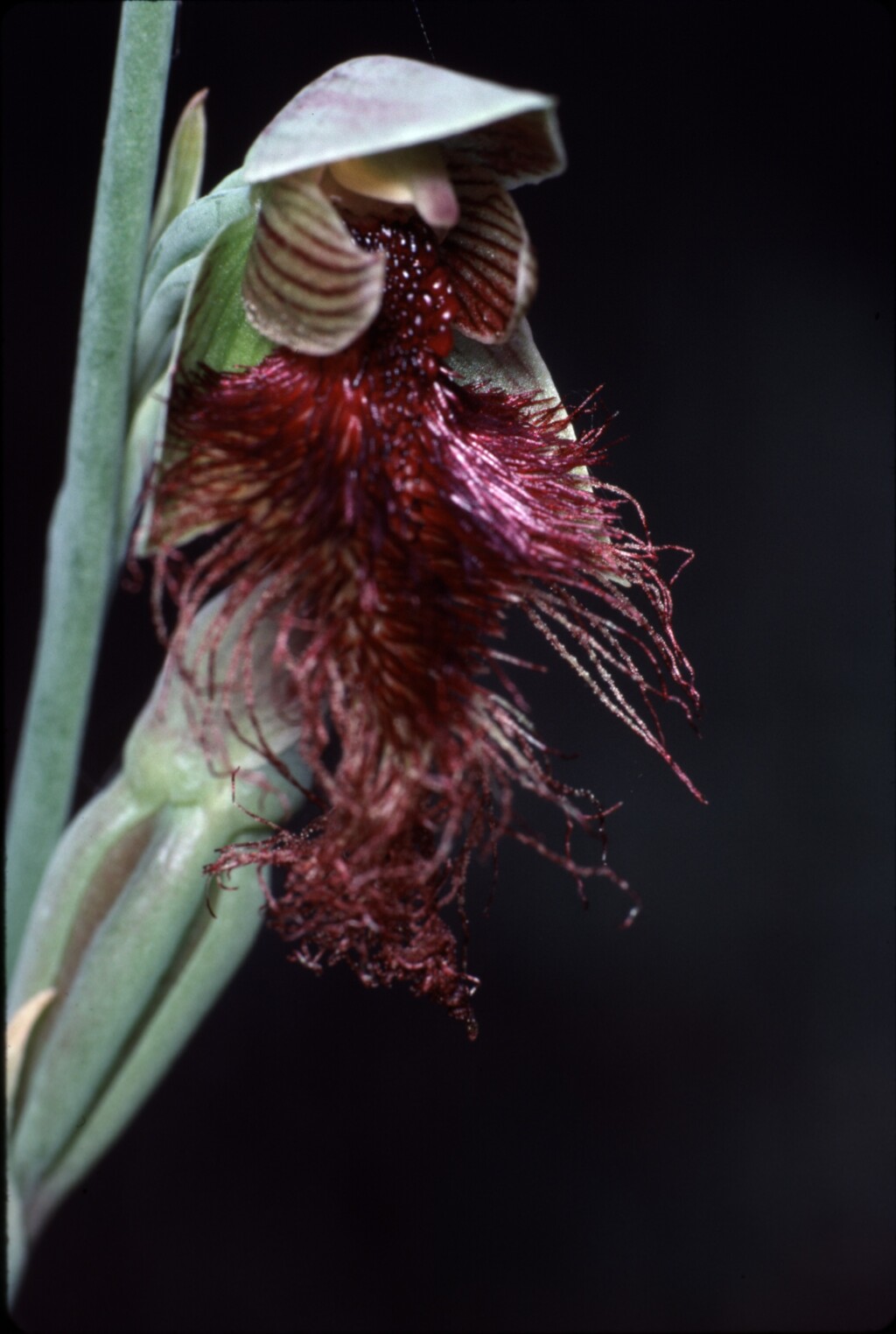Calochilus therophilus
D.L.JonesFlowering plant 20–95 cm tall, slender to moderately stout. Leaf erect, linear-lanceolate, fleshy, channelled, 10–40 cm long, shorter than raceme. Stem bracts 2. Flowers 3–15, green and purplish; subtending bract tapering to fine point; pedicel (excluding ovary) c. 7–10 mm long; dorsal sepal erect, broadly ovate, 11–14 mm long, concave, acute; lateral sepals ovate, as long as dorsal sepal but about half as wide, spreading at sides of labellum; petals erect, ovate, asymmetric, shorter than sepals, brownish with deep reddish-purple stripes. Labellum curved forward, lamina narrowly triangular, 19–22 mm long, extreme base covered with crowded purple papillae, tip extending into elongate (up to 6 mm long) glabrous or sparsely hairy ribbon, in between densely bearded with long reddish-purple glistening glandular hairs. Column short, wings rather inconspicuous, with 2 purple eye-like glands at base, not connected by prominent ridge. Flowers Dec.–Feb.
Wim, OtP, CVU, EGL, HSF, HNF, OtR, MonT, VAlp. Also Qld, NSW, ACT. Very scattered from the Grampians in the west to the Wulgulmerang area in the east (also in central areas e.g. Enfield, Kinglake and Christmas Hills). Possibly more widespread and common than current records suggest and overlooked through its resemblance to Calochilus robertsonii.
Similar in appearance to Calochilus robertsonii, but often more robust and later flowering.
Entwisle, T.J. (1994). Orchidaceae. In: Walsh, N.G.; Entwisle, T.J., Flora of Victoria Vol. 2, Ferns and Allied Plants, Conifers and Monocotyledons, pp. 740–901. Inkata Press, Melbourne.
 Spinning
Spinning

